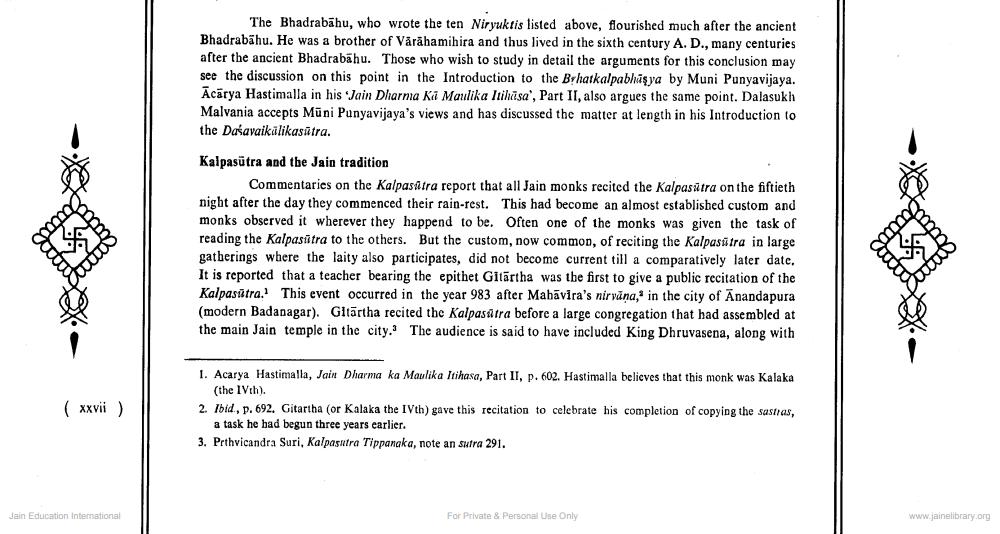________________
( xxvii)
Jain Education International
The Bhadrabahu, who wrote the ten Niryuktis listed above, flourished much after the ancient Bhadrabahu. He was a brother of Värähamihira and thus lived in the sixth century A. D., many centuries after the ancient Bhadrabahu. Those who wish to study in detail the arguments for this conclusion may see the discussion on this point in the Introduction to the Brhatkalpabhasya by Muni Punyavijaya. Acarya Hastimalla in his Jain Dharma Ka Maulika Itihasa', Part II, also argues the same point. Dalasukh Malvania accepts Mūni Punyavijaya's views and has discussed the matter at length in his Introduction to the Datavaikalikasutra.
Kalpasūtra and the Jain tradition
Commentaries on the Kalpasitra report that all Jain monks recited the Kalpasutra on the fiftieth night after the day they commenced their rain-rest. This had become an almost established custom and monks observed it wherever they happend to be. Often one of the monks was given the task of reading the Kalpasitra to the others. But the custom, now common, of reciting the Kalpasütra in large gatherings where the laity also participates, did not become current till a comparatively later date. It is reported that a teacher bearing the epithet Gitärtha was the first to give a public recitation of the Kalpasūtra. This event occurred in the year 983 after Mahavira's nirvana, in the city of Anandapura (modern Badanagar). Gltartha recited the Kalpasutra before a large congregation that had assembled at the main Jain temple in the city. The audience is said to have included King Dhruvasena, along with
1. Acarya Hastimalla, Jain Dharma ka Maulika Itihasa, Part II, p. 602. Hastimalla believes that this monk was Kalaka (the IVth).
2. Ibid., p. 692. Gitartha (or Kalaka the IVth) gave this recitation to celebrate his completion of copying the sastras, a task he had begun three years earlier.
3. Prthvicandra Suri, Kalpasutra Tippanaka, note an sutra 291.
For Private & Personal Use Only
www.jainelibrary.org




